Curious to uncover one of the most effective weight loss and health secrets of all time? A trick that all but ensures you'll remain full and satisfied while shedding pounds? The answer is pretty simple: Eat more fiber, something a lot of people aren't currently doing.
See, Americans should consume 28 grams of fiber per day if they're following a 2,000 calorie diet, according to the FDA. But many of us aren't getting anywhere close to that amount. Experts estimate that 95% of American adults aren't meeting the recommended intake of fiber per day. A report from the Food and Drug Administration states that the average American woman eats only 15 grams of fiber a day, while the average adult man consumes just under 19 grams per day. For a point of reference, that's the equivalent of consuming just one large apple and three tablespoons of chickpeas—which is practically nothing!
The oft-overlooked nutrient, which is the indigestible material found in fruits, vegetables, whole grains, and legumes, is both extremely filling and brimming with health benefits—making it a vital component of every diet. And when you're not consuming enough fiber, things might be going awry in your body that you're totally unaware of.
You Get Backed Up
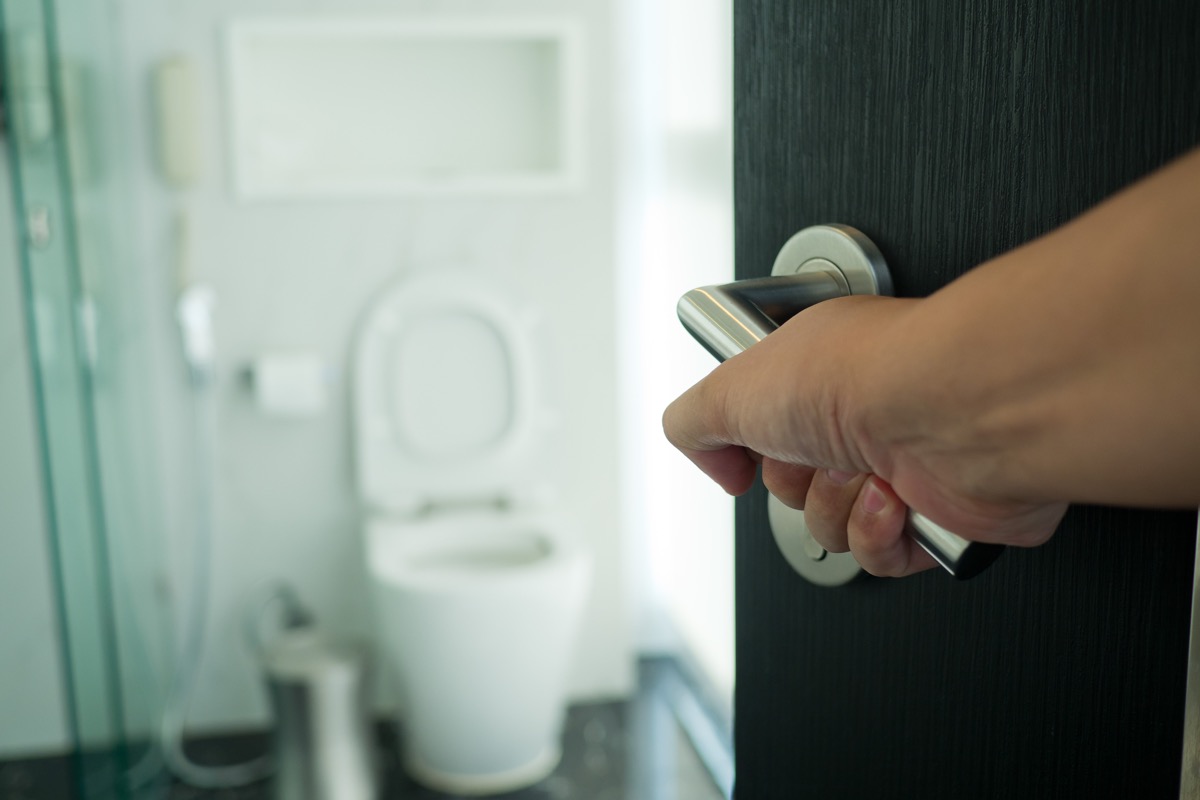
Constantly feeling "backed up" in the bathroom may be a sign you're coming up short on fiber, says registered dietitian-nutritionist Ilyse Schapiro, MD, RD, CDN. "Having a fiber-rich diet allows more water to remain in your stool, making it easier to pass through your intestines. When we don't get enough fiber, it slows down our digestive system and makes it harder for us to eliminate our waste." Add more of these high fiber foods to your daily diet to keep things moving along smoothly and ensure you hit the nutritional mark on the reg.
You're Always Hungry
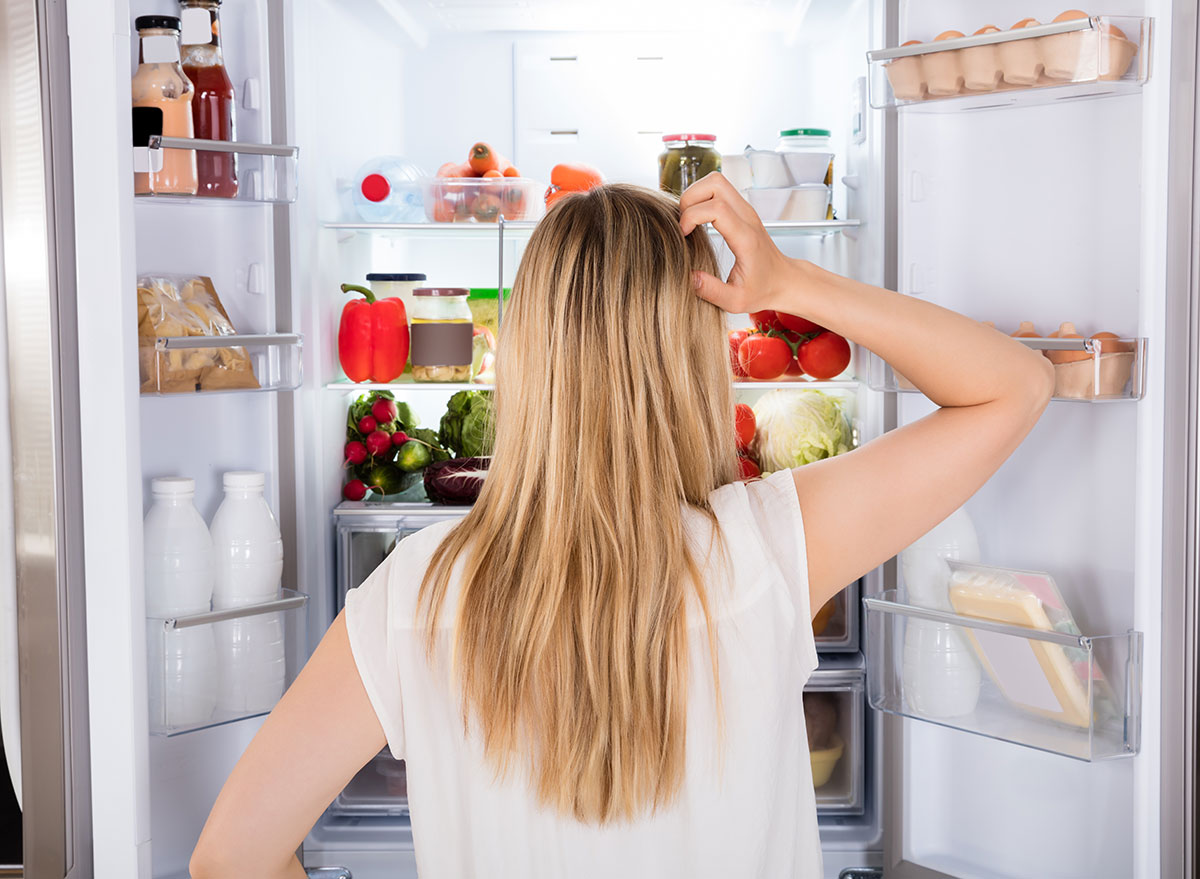
If you've ever eaten a huge tray of chicken nuggets and fries only to find your stomach growling soon after, it's likely because your meal lacked fiber. Fiber helps to slow the digestion process and keep your blood sugar levels stable, helping you feel fuller for longer. Plus, when a specific type of fiber, soluble fiber, is fermented in the large intestine, your body produces two gut hormones that play a role in inducing satiety. Adding a fiber-rich food like avocados, beans, brown rice, and pears to your meals and snacks will help keep those post-meal tummy rumbles at bay—and can subsequently aid weight loss efforts.
You've Gained Weight
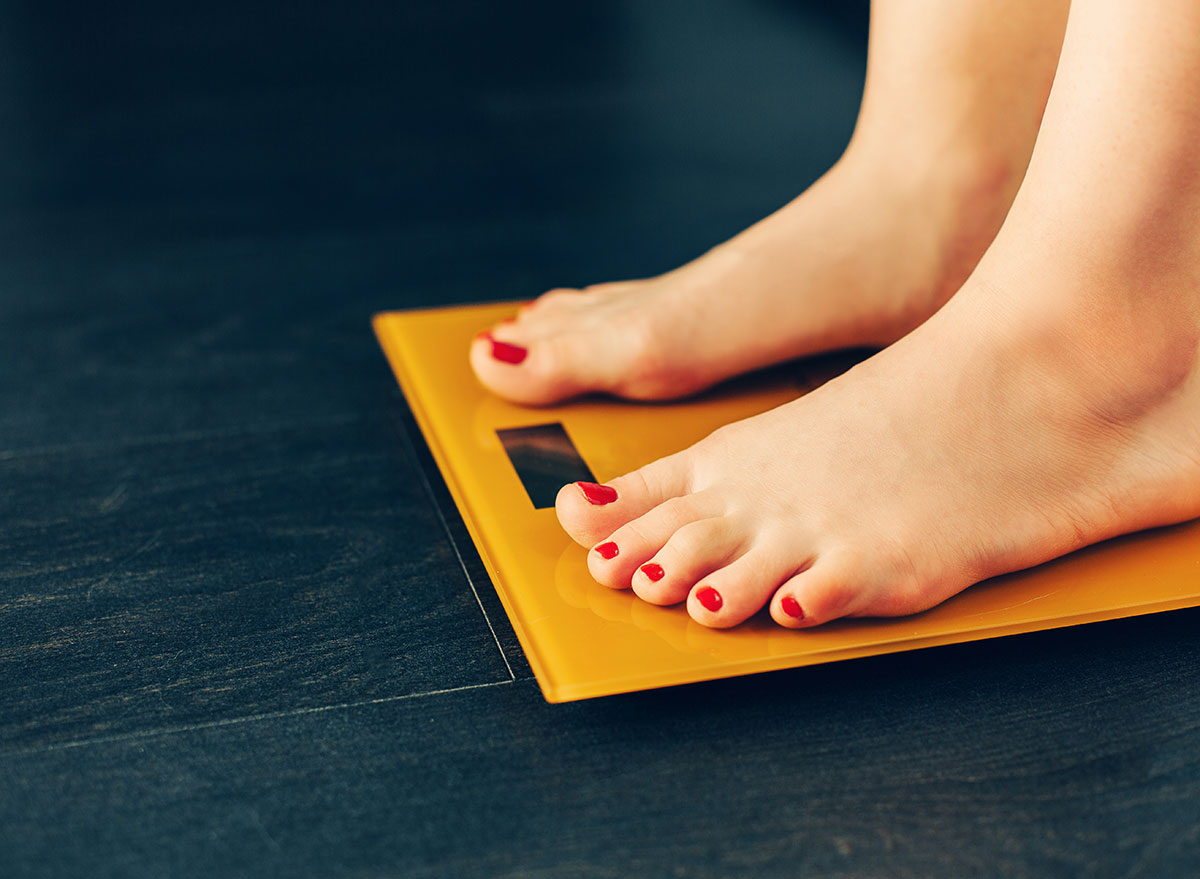
"When we don't eat enough fiber, we tend to be hungrier and are more prone to overeating," explains Schapiro. As you can assume, with overeating comes weight gain. So the opposite is true: when you do eat fiber, you'll feel fuller and can lose weight. One study found that when participants added just 8 grams of fiber to their daily diets over the course of 20 months, they lost an average of 4.4 pounds — most of which was body fat. So if you start to see the scale creeping up, it might be time to take a look at your diet to identify whether you're eating enough fiber.
You're Sleepy All the Time

Besides upping your risk for diabetes, seesawing blood sugar levels can also leave you feeling lethargic—even if you got plenty of shut-eye the night before. When you don't eat enough fiber, your body digests simple carbohydrates more quickly, which are then released into your bloodstream rapidly. To keep your energy and blood sugar levels stable throughout the day, reach for a fiber-filled source of complex carbs with a bit of protein and fat. A slice of Ezekiel bread topped with a tablespoon almond butter (4 g fiber, 7.5 g protein, 9.5 g fat) is an easy way to sneak in all those prime energy-boosting nutrients at once.
You Have High Cholesterol

The less soluble fiber you consume (that's the kind found abundantly in oatmeal, beans, and brussels sprouts), the higher your risk for high cholesterol climbs, according to a meta-analysis published in The American Journal of Clinical Nutrition. Scientists hypothesize that fiber acts like a magnet as it moves through the intestine, attracting and carrying out the artery-clogging plaque that would otherwise spike cholesterol levels.
You're constantly suffering from gastrointestinal issues, like bloating
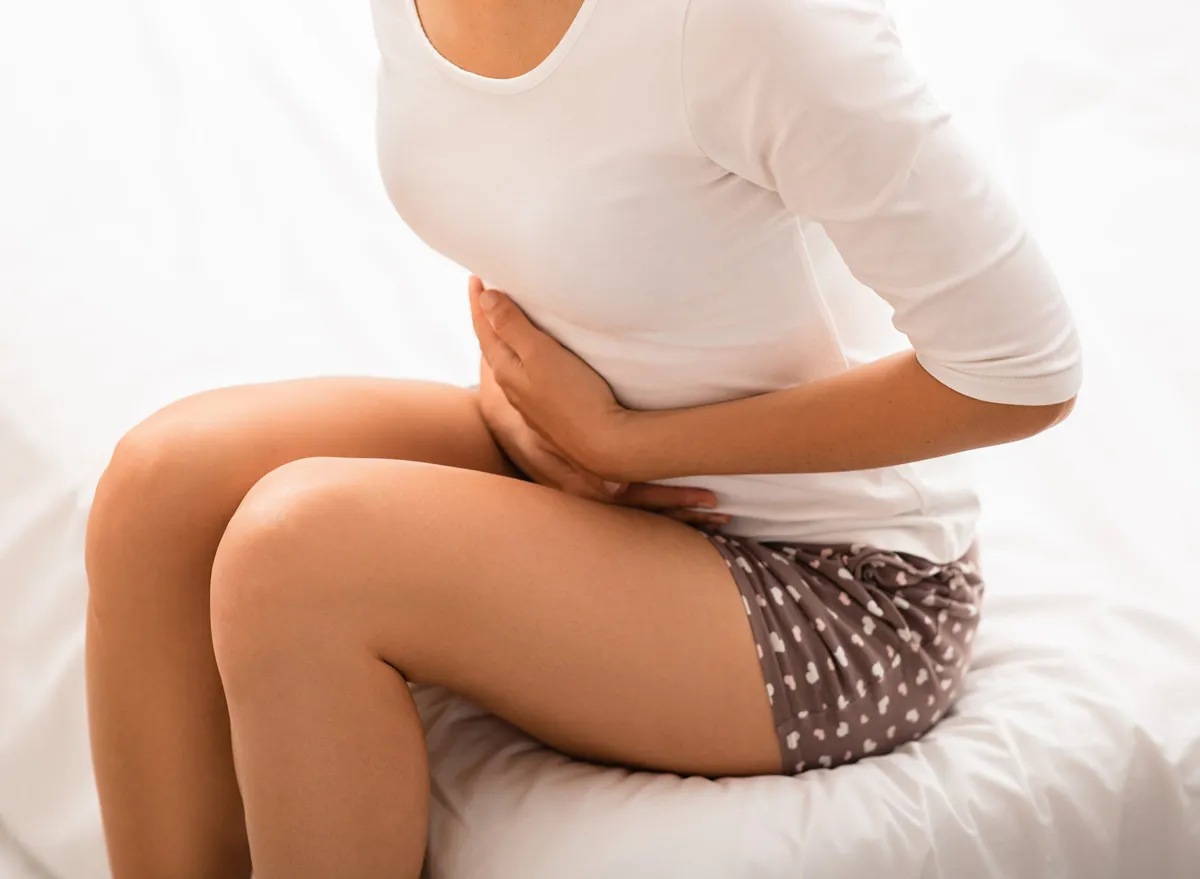
It sounds counterintuitive, but you can feel bloated when you don't eat enough fiber just like how you can feel bloated when you eat too much fiber. In fact, the two are linked. Typically, you feel bloated after eating too much fiber because your diet is lacking in fiber to begin with. Fiber is an indigestible carb, which means that your body doesn't break it down to use for energy. Instead, your body uses it as either bulk for your stool or as food for your healthy bacteria. As the bacteria break down the fiber, it releases gas, which can cause bloating. If you haven't been feeding your good gut bugs in a while, it may take them a while to figure out how to break this food down again. That's why dietitians recommend increasing your fiber intake slowly—this will allow your system to readjust and prevent.
A blood test says you have other nutrient deficiencies.
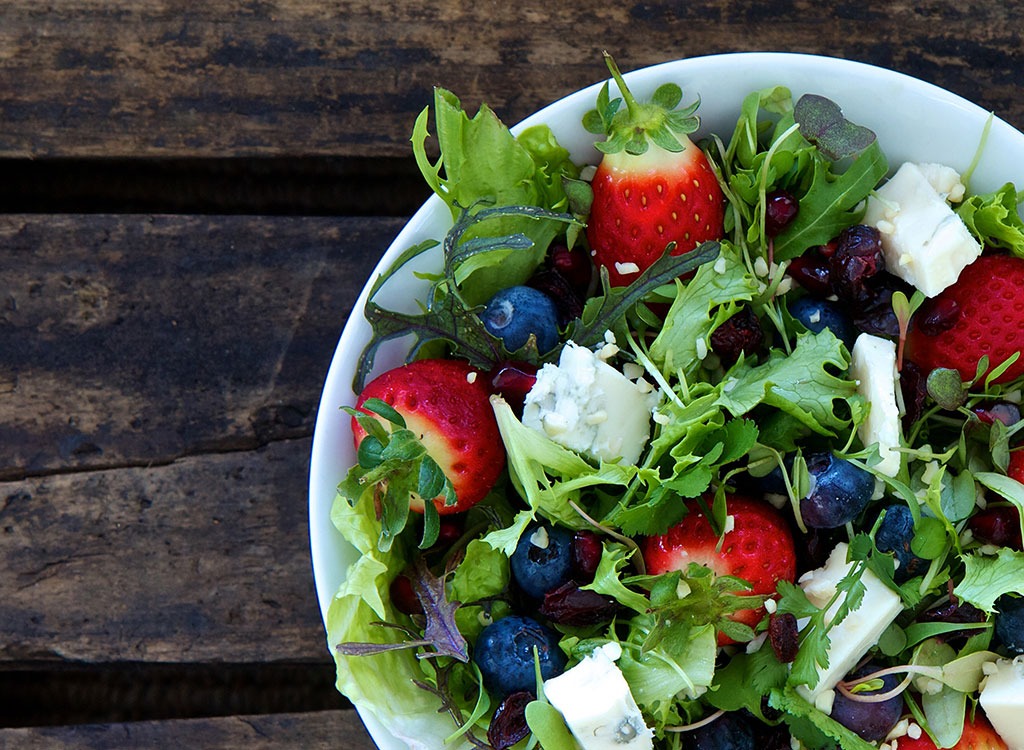
If you're not eating fiber-rich foods like whole grains, legumes, fruits, and veggies, there's a good chance you also may not be getting enough of the other health-protective nutrients found of those foods. Check in with your M.D. if you know you're not consuming much fiber to make sure you don't have any type of major nutritional deficiency. A multi-vitamin and a well-rounded diet can likely help you get back on track towards better health. And speaking of vitamins, learn all there is to know about popping those Flinstones in our exclusive report, what you need to know before taking vitamins!
You've recently developed diabetes.
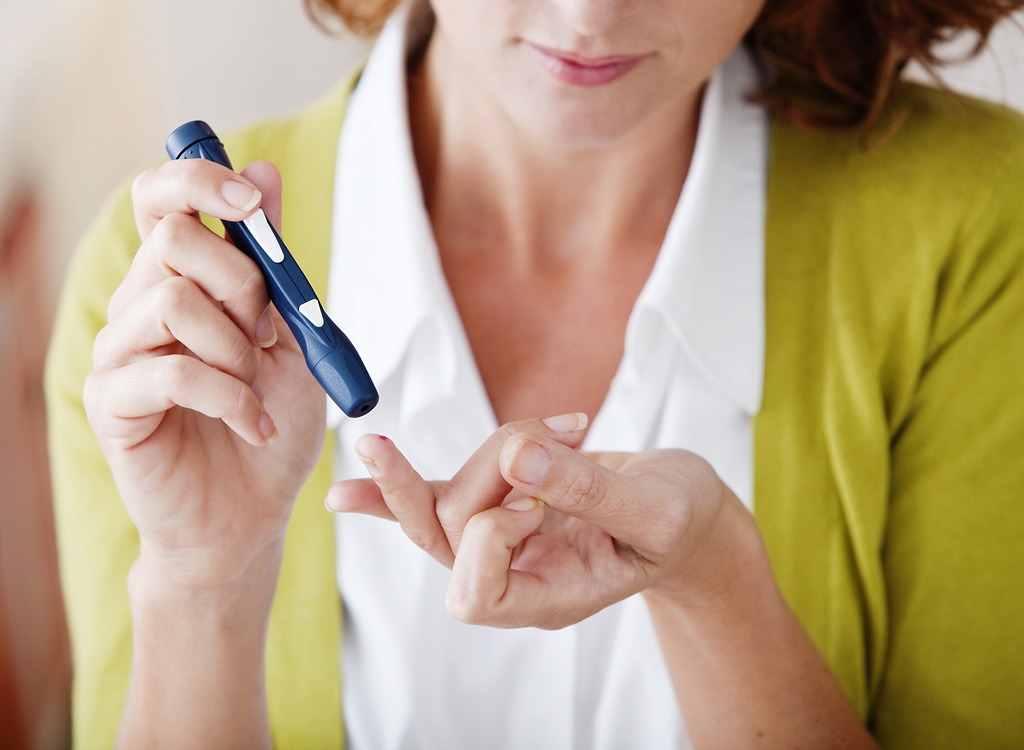
Get this: People who regularly eat low-fiber, fast-digesting high-glycemic foods like white bread, cookies, soda, and white rice, are more than twice as likely as those who regularly consume the nutrient to develop type 2 diabetes. On the other hand, those who consume the highest amount of fiber, and cereal fiber, in particular, have the lowest risk of diabetes, according to a recent review. What's the connection? "Foods rich in fiber help to prevent blood sugar and insulin spikes, that over time could lead to diabetes," explains Schapiro.
You've been diagnosed with heart disease.

When your cholesterol levels are out of a healthy range—as a result of a low-fiber diet or otherwise—it can increase your risk of heart disease and stroke, according to U.S. National Library of Medicine data and findings published in the journal Stroke. That's because both stroke and heart disease are brought on by the buildup of plaque in the arteries. To help your ticker stay healthy for years to come, be sure to avoid these worst foods for your heart.
How to Add More Fiber to Your Diet
Adding more fiber to your diet is actually really simple—yes, seriously! Just be sure to increase your intake slowly and increase your intake of fluids as you ramp up to keep bloating, cramping and gas at bay. (Hate H2O? Tea, seltzer, and detox water can all help your body digest the extra fiber.) Read on to discover 10 stupid-simple ways to up your intake of fiber today!
Go for Whole Grain
If white bread or rice are staples in your diet, swap them out for sources of fiber-packed whole grains like Ezekiel Bread (2-4 grams/slice), brown rice (4 grams/cooked cup), or quinoa (5 grams/cooked cup).
Add a Fruit, Veggie or Whole Grain to Each Meal & Snack
If keeping a log of your daily fiber intake seems totally unrealistic, you can ensure you hit the recommended 32 grams per day by simply adding a serving or two of fruits, vegetables, or whole grains to every meal and snack. Fruits, vegetables, and whole grains are all excellent sources of fiber. Aim to eat at least two servings of fruit, two to three servings of vegetables, and one or two servings of whole grains daily to meet your fiber needs. If you already eat Greek yogurt for breakfast, for example, top it with some blackberries. If mason jar salad is your mid-day go-to, add in a half-cup of navy or kidney beans.
Swap Juices for Smoothies
Fresh juices may serve up a hefty serving of vitamins, but the juicing process strips the fiber from fruits and vegetables, so you are mainly getting carbohydrates and sugar—not what you want. Smoothies, on the other hand, utilize whole fruits and vegetables, including the skin, seeds, and pulp, which means that you retain all of the fiber. By swapping your daily juice for a smoothie you can add a few more grams of fiber to your day.
Keep the Skin On
You've likely heard that fruits and veggies like potatoes, pears, and apples are solid sources of fiber—but that's only the case if you consume their skins, too. To avoid ingesting any pesticide residue lurking on your eats, wash the skins thoroughly before noshing and opt for organic varieties when your budget allows.
Eat More Beans
Pulses like beans, lentils and chickpeas are some of the most potent sources of fiber Mother Nature has to offer, serving up between 15 and 12 grams per cup. Add them to salads, soup recipes rice and veggie side dishes to reap their belly-slimming benefits.
Swap Your Cereal for Oatmeal
If you can't imagine kicking off your morning sans bowl and spoon, at least fill your bowl with slow-cooking oatmeal. Don't have 30+ minutes to spare each morning waiting for them to cook? Whip up a batch of overnight oats. To make a batch, fill a Tupperware container with oats, toppings, and a liquid like milk or water. Then you throw it in the refrigerator overnight. While you're sleeping, the flavors fuse together so all you have to do is scarf it down next morning—no cooking required!
Try a Bean-Based Pasta Alternative
Carb-a-holic? Can't say no to pasta night? Addicted to spaghetti? Good! So long as you slurp down a bean-based noodle like Banza (8 g fiber/serving) or Explore Cuisine Organic Black Bean Spaghetti (12 g fiber/serving) you'll be one step closer to hitting your daily fiber goal. To amp up the fiber intake of your meal further, add some sauteed fiber-rich veggies to your pasta bowl. Broccoli, Brussels sprouts, and peas are all solid picks and pair well with a variety of sauces.
Swap Chips for Popcorn
Toss out those greasy, fiber-void bags of chips and replace them with a bag of popcorn. Many people don't realize that air-popped popcorn is a whole grain, serving up 5 grams of fiber and just 120 calories in a 4 cup serving. A far cry from regular potato chips which pack just over 1 gram of fiber and 160 calories in a 1-ounce serving. Choosing popcorn for a snack will add a serving of whole grains to your day, and 5 times more fiber compared to chips. Just be sure to steer clear of popcorn doused with butter, oil, and salt, as these ingredients can negate the health benefits.
Go Nuts
Nuts—like almonds—are most often touted for their protein and healthy fats, but they're solid sources of fiber, too. An ounce of almonds packs 3.5 grams per ounce while the same serving size of walnuts carries 2 grams—not too shabby! Keep a bag of mixed nuts in your car and desk drawer so you're prepared with a non-perishable, filling snack whenever hunger strikes. They also make a tasty yogurt and oatmeal mix-ins.
Add Flax or Chia Seeds to Smoothies
Add a tablespoon of flaxseeds or chia seeds (2-5 grams per tablespoon) to your to smoothies, salad dressings, and yogurt.
No comments:
Post a Comment